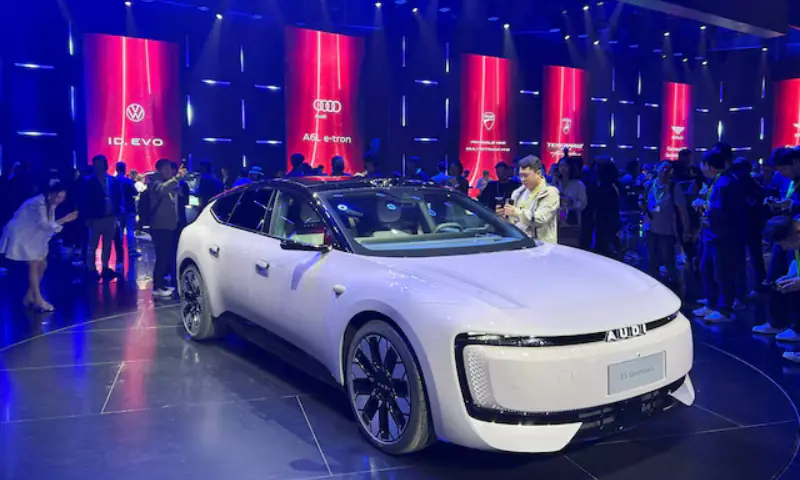Global Automakers Turn to Chinese EV Technology for Faster Development
When Audi executives first saw the Zeekr 001 in 2021 — a long-range electric vehicle with sleek European-style design — it served as a wake-up call. To compete in the fast-moving EV market, premium brands like Audi realized they needed Chinese technology.
Audi’s Fast-Track EV for China
Audi teamed up with Chinese partner SAIC to launch the Audi E5 Sportback, developed in just 18 months. The new EV, priced around $33,000, uses SAIC’s batteries, powertrain, infotainment, and advanced driver-assistance systems. Deliveries in China are starting this month.
A Growing “China Inside” Trend
Other automakers are following the same strategy:
-
Toyota and Volkswagen are co-developing China-focused EVs with GAC and Xpeng.
-
Renault and Ford are exploring global models built on Chinese EV platforms.
-
Leapmotor has partnered with Stellantis to sell Chinese-engineered EVs outside China.
Analysts say this approach mirrors the 1990s “Intel Inside” model, where cutting-edge technology was sold as a ready-to-use package. In this case, Chinese firms provide complete EV platforms, allowing global brands to launch vehicles faster and at lower cost.
Why Global Automakers Need China
Developing EVs from scratch can take years and billions of dollars. Chinese EV makers, inspired by Tesla, have created modular platforms that cut costs and speed up innovation. By licensing this technology, traditional automakers can:
-
Save on R&D expenses.
-
Reduce time-to-market.
-
Access competitive EV systems that can be updated more easily.
Win-Win Partnerships
For Chinese companies, licensing technology provides new revenue streams amid a domestic price war and global trade pressures. For global automakers, it offers a shortcut to remain competitive in the EV race.
Industry experts, however, caution against over-reliance on outside technology. While collaboration accelerates progress, automakers must blend in their own innovations to maintain brand identity and differentiation.

